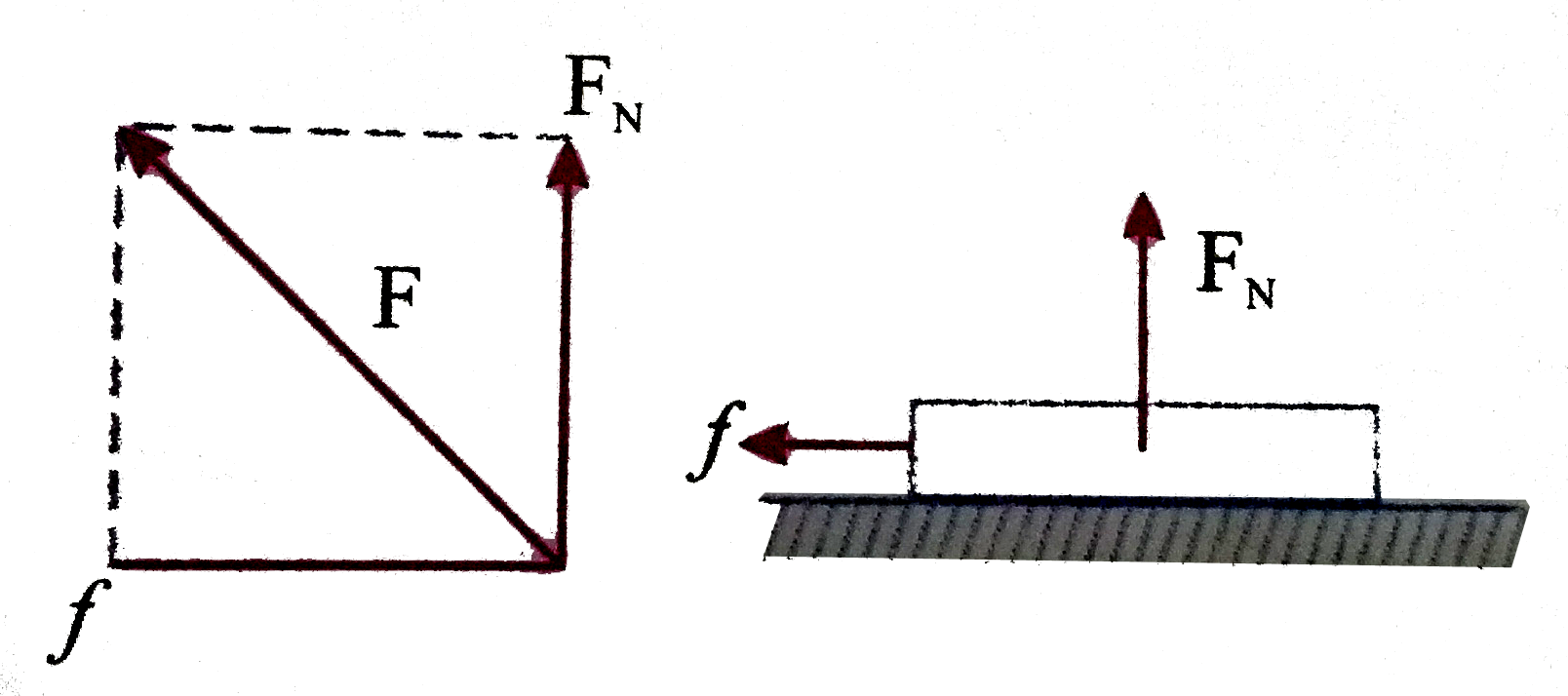Let F,FNandf denote the magnitudes of the contact force, normal force and the friction exerted by one surface on the other kept in contact. If none of these is zero,
F>f
FN>f
F>FN
FN−f<f<FN+f
The correct Answer is:A, C

Hence F=√f2+F2N Hence F>FN&F>f
Also F=√F2N+f2+2FNf−2FNf
=√(FN+f)2−2FNf=(FN+f)−δ
Again F=√F2N+f2−2FNf+2FNf
=√(FN−f)2+2FNf=(FN−f)+δ>(FN−f)
Hence FN−f<f<FN+f
Topper's Solved these Questions
- FRICTIONBook:NARAYNAChapter:FRICTIONExercise:Passage type of questions
Explore 6 Videos
- FRICTIONBook:NARAYNAChapter:FRICTIONExercise:Integer type questions
Explore 14 Videos
- FRICTIONBook:NARAYNAChapter:FRICTIONExercise:Passage type of questions I
Explore 6 Videos
- COLLISIONBook:NARAYNAChapter:COLLISIONExercise:Level-II (H.W)
Explore 54 Videos
- GRAVITATIONBook:NARAYNAChapter:GRAVITATIONExercise:EXERCISE -IV
Explore 40 Videos
Similar Questions
The angle between the resultant contact force and the normal force exerted by a body on the other is called the angle of friction. Show that it λ be the angle of friction and μ the coefficient of static friction. λ≤tan−1μ.
View SolutionLet Fpp,FpnandF∩ denote the magnitudes of the nuclear force by a proton on a proton, by a proton on a neutron and by a neutron on a neutron respectively. When the separation is 1fm,
View Solution
Knowledge Check
Suppose F,FN&f are the magnitudes of the contact force, normal force and the frictional force exerted by one surface on the other, kept in contact, if none of these is zero :
AF>fBFN>fCF>FND(FN−f)<(FN+f)The magnitude of electric force, F is
Adirectly proportional to the multiplication of both charges.Bdirectly proportional to the distance between both charges.Cdirectly proportional to the square of the distance between both charges.Dconstant.If F denotes the contact force, f denotes the frictional force exerted by one surface on the other, FN denotes the normal reaction force between the two respectively and none of them are zero, then
AF<fBFN<FCFN>FDFN−f<F<FN+f
Let Fpp,FpnandF∩ denote the magnitudes of the nuclear force by a proton on a proton, by a proton on a neutron and by a neutron on a neutron respectively. When the separation is 1fm,
View SolutionLet Fpp,FpnandF∩ denote the magnitudes of the nuclear force by a proton on a proton, by a proton on a neutron and by a neutron on a neutron respectively. When the separation is 1fm,
View SolutionLet F1 be the magnitude of the gravitational force exerted on the Sun by Earth and F2 be the magnitude of the force exerted on Earth by the Sun. Then:
View SolutionThe magnitude of frictional force depends on
(I) The surface area of contact.
(II) The weight of the object.
(III) The condition of the surface in contact.
View SolutionLet FPP,FPnandFnn denote the magnitude of net force by a proton on a proton, by a proton on a neutron and by a neutron on a neutron respectively. Neglect gravitational force. When the separation is 1 fm :
View Solution

